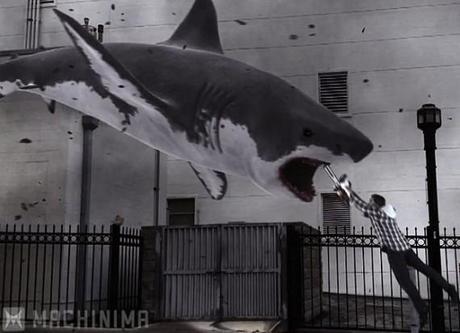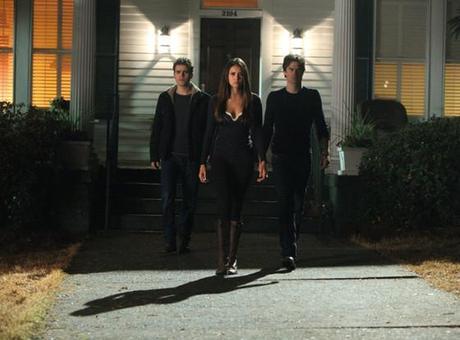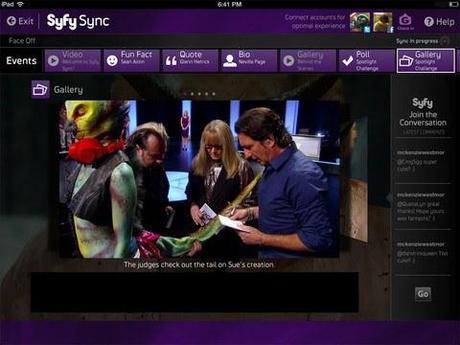Nielsen, the agency responsible for tabulating the ratings for all American TV shows, and Twitter have announced that beginning with the upcoming Fall 2013 TV season they will begin publishing what will be known as the Nielsen Twitter TV Rating. Interesting. Let’s talk about this.
Something I have learned ever since joining Twitter over the past year is that whenever an actor/comedian or pop culture writer is suddenly unloading a stream of horribly confusing, context-free comments they are almost always at that moment watching a film or TV show and live-tweeting their experience. Moreover, the people I follow (like actor Paul Scheer and pop culture writers Linda Holmes and Tara Ariano) who live-tweet are usually exchanging their tweets with friends who are cracking jokes right back at them. It is this type of communal experience which enabled SyFy’s Sharknado to take an otherwise unsuspecting world by storm, the flurry of deafening Twitter buzz the night it first aired (July 11) sideswiping anyone not hip to what was happening.

However, for all of Sharknado‘s brief takeover of Twitter activity it was still only watched by 1.4 million people, not significantly higher than the 1.3 million who watched the SyFy original movie Independence Day-saster the month prior. Then something funny happened. The second and third airings of Sharknado enjoyed considerable boosts in overall viewers, 1.9 million watching the second screening and 2.1 million the third screening. That last one was a record level of viewership for a repeat of a SyFy original movie. Who gets the credit for that? Is it a Twitter-bump? Or simply a result of all the free advertising Sharknado received from the national coverage of the Twitter reaction to the film’s premiere screening in July? Or both?
This gets at an important question: for all of its apparent ability to help generate buzz for TV shows, does Twitter activity related to TV shows actually relate to higher ratings? Lacking any concrete, scientific evidence, the networks, particularly the younger-skewering CW, have largely been assuming the answer is yes. It is incredibly common to watch prime time shows nowadays and notice a watermarked hashtag at the bottom right-hand corner of the screen at all times, with commercials encouraging viewers to Tweet about the episode using the suggested hashtag in all of their tweets. Moreover, the CW and SyFy each have network-specific apps, which can be used as a second screen to view Twitter reactions and extra content while a new episode for a show is premiering.

The CW’s Vampire Diaries has had the show’s Executive Producer Julie Plec and several of the stars participate in a kind of town hall event in which they would answer questions from fans as well as provide commentary via Twitter while a new episode of the show was premiering.
Many of these efforts to utilize Twitter as a promotional tool heavily reward those viewers who actually watch episodes live instead of delaying to DVR, digital download/stream, or even an illegal method. In fact, it has been a common experience of mine as of late to watch something like the SyFy show Defiance via DVR and see every episode advertise a community watch event being conducted through the network’s app, but the event only applies for those who watch the show live.

Here’s an example of the SyFy Sync app to connect viewers to a community of fellow fans while watching an episode live.
However, even with all of this social media outreach on the part of the networks the question remains: does Twitter activity related to TV shows help generate ratings, or is it simply an echo chamber in which the only people discussing a program are the ones who are already fans and thus not converting new fans? Well, Nielsen is very proud of themselves because they claim to have been the first ones to provide an answer via rigorous scientific research. In a two-way causality study they released earlier this month, Nielsen presented results of minute-to-minute analysis of 221 separate telecasts. They found that the popularity of a TV show lead to increased Twitter activity 48% of the time, and the level of Twitter activity lead to higher ratings 29% of the time among 221 telecasts. Not surprisingly, competitive reality programming accounted for 44% of the 221 telecasts followed by comedy (37%) and sports (28%) programming.
Regardless of all that, it’s been obvious for a while now that the Nielsen method of calculating TV ratings is still catching up to how people actually watch TV shows. For example, Vampire Diaries was the no. 1 show on TV in terms of social media interactions, according Trendrr.TV, the same weekend that its actual Nielsen TV ratings placed it outside the Top 100, even dipping 7% week-to-week.
So, now we’ll have the Nielsen Twitter TV rating to help make up the difference, and I don’t know if it will help, hinder, or simply muddle things up. However, I think it should be fascinating to see what happens with these variable in relation to TV ratings this upcoming TV season. What would have happened last year if this variable at been in place? When ABC was canceling Happy Endings and Don’t Trust the B in Apartment 23 could the producers have convinced the network otherwise by pointing toward a Nielsen Twitter rating which ranked them above most other comedies, thus indicating an engaged audience? Or when NBC was dragging their feet about whether or not to renew Hannibal could a Nielsen Twitter rating made their decision easier? Or will it all amount to be a bunch of idle chatter on Twitter?
Have any thoughts about this article or the Nielsen Twitter study in general? Let us know in the comments.

